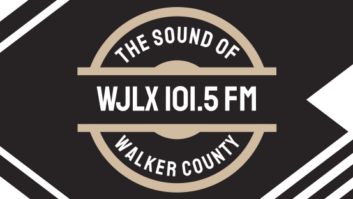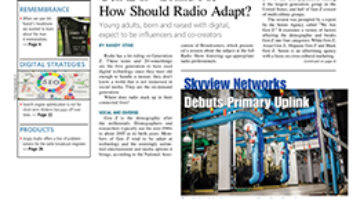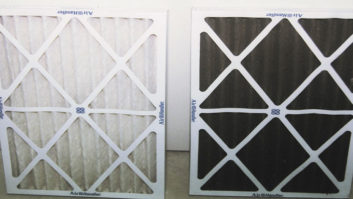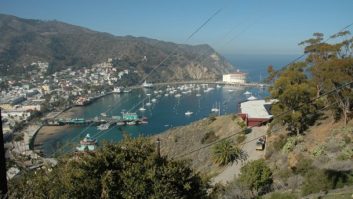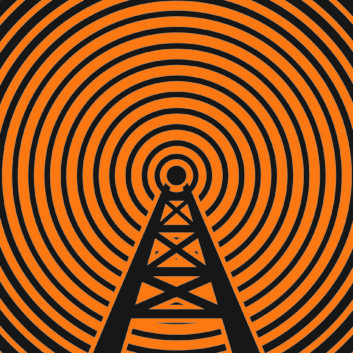
The author is general counsel of the Society of Broadcast Engineers.
There is a lot of inaccurate or misleading information being circulated, mostly within the land mobile radio community (but elsewhere as well), about your obligation to paint and light “short towers” (i.e. those between 50 and 200 feet in height) that are not located in close proximity to an airport or heliport, but which are located in rural or agricultural areas.
Here is what broadcast engineers need to know: You may have to register your short broadcast tower in an FAA database depending on its location, but you do not have to paint or light it unless it is near an airport.
CROPDUSTERS
It all started back around 2013. States became concerned that low-flying agricultural aircraft were hitting meteorological evaluation towers (METs). There is no history of aircraft hitting short towers generally; the only problem was with respect to METs.
These are temporary structures, often erected in rural areas on short notice, with very low visibility, and they are very hard for pilots to see. They are not on any maps; and for cropdusters and other low-flying aircraft, they posed a real threat if not near other structures.
States that have rural, agricultural areas became concerned that short towers that are not near airports did not have to be lighted or painted according to FAA regulations. Colorado, Washington state, Idaho and a few other western states enacted statutes that regulated all short towers.
In the wake of agricultural aircraft collisions with METs, the National Transportation Safety Board (NTSB) recommended in 2013 that states enact laws (cropduster statutes) requiring marking and registration of METs. FAA Advisory Circular 70/7460-1L concerning Obstruction Marking and Lighting, released Oct. 8, 2016, urged, on a voluntary basis, the marking of METs (only) less than 200 feet or 61 meters in height.
The basic premise for the cropduster statutes was that short towers are not regulated by the FAA. That was inaccurate. Towers less than 200 feet in height are regulated by the FAA (and notification to the FAA is called for by the FCC) if a tower shorter than 200 feet is to be located in an area that the FAA has determined constitutes a danger to air navigation: that is, where the towers are located within the glide slope of an airport or heliport (see FCC rules, Section 17.7). The glide slope is 100-to-1 for a horizontal distance of 6.10 kilometers from the nearest point of a runway of an airport or heliport, and less for towers closer to the airport or heliport.
Unless such short radio towers were located within the glide slope of airports or heliports, they were not required to be painted or lit because they were not deemed to be an air hazard.
THE FINAL SAY
The FAA has preemptive federal jurisdiction to protect air traffic as necessary in a reasonable exercise of its discretion. The comprehensive regulation of tower height, marking and lighting by the FAA (in conjunction with the FCC) leaves no room for the states to supplement it. The Supreme Court has concluded that Congress intended to preempt states with respect to aviation safety.
Perhaps because these state cropduster laws were subject to challenge, it enacted H.R. 636, the FAA Extension, Safety and Security Act of 2016 (Reauthorization Act) in July 2016. Section 2110 of that act instructed the FAA to enact rules by July of 2017, requiring painting and lighting of short radio towers that were located in rural areas.
The 2016 act defined towers that are covered as self-standing or guy wire-supported structures: (1) 10 feet or less in diameter at the above-ground base (excluding concrete footing); (2) more than 50 and less than 200 feet tall; and (3) with accessory facilities mounted with antennas, sensors, cameras, meteorological instruments or other equipment.
Covered towers were those located (1) outside the boundaries of an incorporated city or town; (2) on undeveloped land; or (3) on land used for agricultural purposes. Undeveloped land was defined as a geographic area where the FAA determines low-flying aircraft are operated on a routine basis, such as low-flying forested areas with predominant tree cover less than 200 feet and pasture and range land.
Exceptions to the covered tower definition include: (1) structures adjacent to a house, barn, electric utility station or other building; (2) structures within the developed area of a farm immediately surrounding a house or other dwelling such as a yard; (3) structures that support electric utility transmission or distribution lines; (4) structures that are wind-powered electrical generators with a rotor blade radius exceeding six feet; or (5) street lights erected or maintained by government entities.
This was a huge problem of course. Short broadcast towers, if they had to be painted and lit, would have to be removed from most locations due to local land use regulations, and the cost of painting and lighting short towers was prohibitive for most users of them.
With help especially from Sen. James Inhofe of Oklahoma (himself a pilot), the NAB, the SBE, the Association of American Railroads and others, the FAA Reauthorization Act of 2018 was enacted. It amended and clarified the 2016 act by revising the requirements for covered towers, as long as the FAA administrator determines they pose no hazard to air navigation.
The legislation requires covered tower operators or owners to either submit the tower’s location and height information into a database to be established by the FAA, or mark the tower consistent with the FAA’s 2015 advisory circular (AC 70/7460–IL). Only METs have to be painted and lit.
The FAA has not yet developed its database, which will contain only the location and height of each covered tower. Covered tower operators or owners who elect to submit tower information to the FAA database must do so within one year of the availability of the FAA database. The 2018 act also excludes towers located within the right-of-way of a rail carrier and used for railroad purposes.
This article originally appeared in the SBE Signal newsletter. Visit sbe.org.
